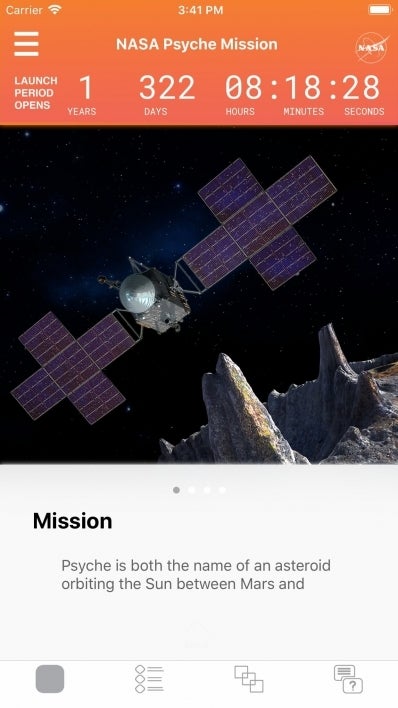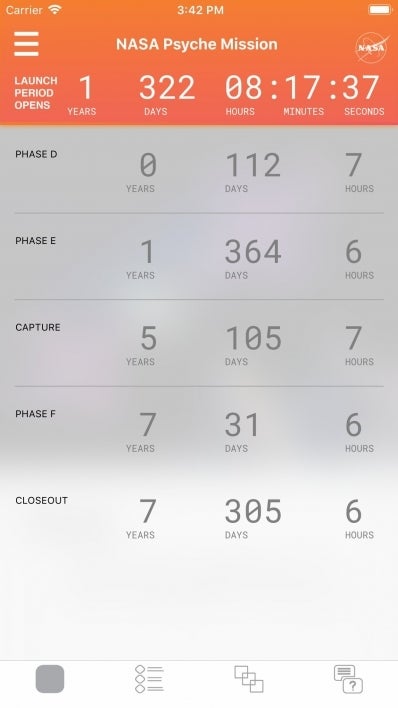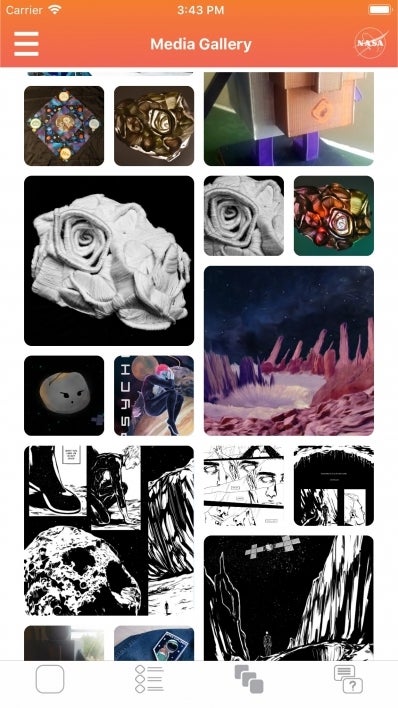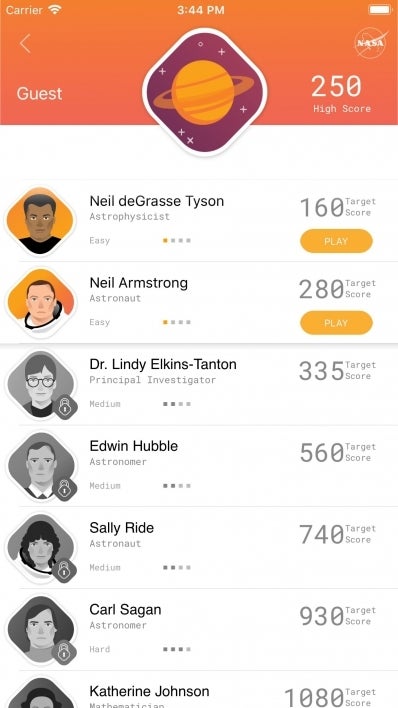ASU-led NASA Psyche mission capstone team wins smartphone app competition

The Sombrero team at the presentation of their application for the NASA Psyche mission smartphone app competition, in April 2018. As shown from left to right, the team included members Josh Hua, Abdullah Alarabi, Julia Liu, Lorin Schaecher, Rachel Addington, Samuel Lam, Jason Price, and Kari Sanford. Credit: Psyche Mission/ASU
An Arizona State University capstone team has designed and launched a new interactive NASA Psyche mission smartphone app to engage with the public.
Available on both Apple and Android devices, the free app invites individuals to test their knowledge of the Psyche mission and various scientific concepts, along with inviting them to interact with the mission’s official timeline and view a gallery of artworks explaining the science behind Psyche.
The app was developed by an interdisciplinary team of ASU senior capstone students with majors ranging from graphic design to engineering management and computer science.
Their app creates a new and unique platform to promote public engagement and knowledge about the Psyche mission.
Capstone students competed against each other in teams to develop an app that best incorporated five elements: a media gallery, links to social media, a countdown clock, a mission timeline and an engaging way to share Psyche mission information.
Each team spent their senior year creating their unique application. At the completion of this time period, teams presented their app to a panel of judges from ASU, the Jet Propulsion Laboratory (JPL), the Massachusetts Institute of Technology (MIT) and NASA. After being scored on experience, technical rubrics and presentation, the Sombrero capstone team, named after the Sombrero Galaxy, was announced as the winner.
“It was one of those moments when you pause for a minute to take it in before you burst into jumping around and yelling with your teammates,” said Sombrero team member Abdullah Alarabi, who graduated from ASU in 2018 with a bachelor’s degree in computer science and software engineering.
In total, the Sombrero team consisted of eight senior capstone students: computer science majors Abdullah Alarabi, Jason Price, Josh Hua, Julia Liu and Samuel Lam; engineering management major Kari Sanford; and graphic design majors Lorin Schaecher and Rachel Addington.
Even though these students came from different fields of expertise, they joined this capstone team for similar reasons.
“We chose this project because of the combination of several things: It was a mobile app, which was a skill we all wanted more experience in, it was NASA- and ASU-sponsored, meaning it would likely be well-structured, and the description seemed like such a such a fun idea with a lot of room for creativity,” Liu said.
With the goals of the project in mind, the Sombrero team came together to develop their winning application.
“Our team's designers drove the design of the app, while the developers came up with the technical implementation and having to decide what was possible to achieve within the schedule set by our project manager (Sanford),” Price said.
The designers started by creating a shared folder with inspirational images.
“As a team, we decided what graphics we tended to like or dislike. It really set the mood for the overall feel of the app and set a good starting point for mockups,” Liu said. “Their ability to incorporate overarching themes for small details was really incredible, like the navigation bar widgets, which creatively incorporated the shape of the Psyche logo.”
Because of the amount of thought and effort the team put into the design and implementation of their application, they felt prepared to present their mobile application to ASU, JPL, MIT and NASA representatives.
“Once we stood before the judging representatives, it came naturally to every one of us,” Alarabi said.
“I remember being incredibly proud with the way our app turned out and very confident and prepared with what we were presenting. Our team had a lot of fun with it, though it did help that our project manager always stressed that the presentation was mostly about sharing our experience. The team also wore shirts to match the gradient of the Psyche logo, and the reactions to that really lightened the mood,” Liu said.
After the team’s strong presentation and victory in the competition at the end of the semester, each member graduated and has gone on to professional work in their respective fields. However, the application’s journey did not end there. ASU software engineering master’s degree students Madhukar Raj and Rohit Singh, previously mobile app developers, were brought on board to refine the app for inclusion on the App Store and to make a version available for Android on Google Play, turning a college capstone project into something truly accessible to the public.
“I feel achieved, especially satisfied, and incredibly proud to watch something my team and I poured so much time, effort and passion into getting recognition. It is a great feeling of accomplishment that I hope I get to encounter often in the future,” said Alarabi, upon learning about the state of the application.
“It's kind of scary, but it is also really exciting. I remember while designing and developing the app, the team was so determined to win the competition. It seemed like we all had the mindset throughout the whole process that this would eventually be launched to the public. We never let the possibility of not winning the competition make us lazy,” Liu said.
“It's neat that my college capstone project is becoming a real product. It feels great to see something I worked on have real-world use," Price said.
With their excitement building as the publication of their app neared, Sombrero team members shared that they are proud to have worked on the project and that it helped build their team working skills immensely by allowing them to discover what working environments best suited them, and providing them with new perspectives on software design, especially in relation to consumer usage and accessibility.
In the future, the team’s app is projected to undergo updates, including gaming features developed by Psyche capstone students from 2019 and 2020 and possibly beyond. To these future capstone teams, the Sombrero team advises students to have fun with their capstone project, to break their project into workable increments, and to communicate any issues you may find with your team openly.
“This Psyche mission capstone project was a once in a lifetime journey, as challenging as it was rewarding,” Alarabi said.
Psyche mission
Psyche, an asteroid orbiting the sun between Mars and Jupiter, is likely made largely of nickel-iron metal. As such, it offers a unique look into the violent collisions that created Earth and the terrestrial planets.
The Psyche spacecraft is planned to launch in August 2022 and travel to the asteroid using solar-electric (low thrust) propulsion. After flying by Mars in 2023 for a gravity assist, the spacecraft will arrive at Psyche in 2026 and spend 21 months orbiting the asteroid, mapping it and studying its properties.
The scientific goals of the Psyche mission are to understand the building blocks of planet formation and explore firsthand a wholly new and unexplored type of world. The mission team seeks to determine whether Psyche is the core of an early planet, how old it is, whether it formed in similar ways to the Earth's core, and what its surface is like.
The spacecraft's instrument payload will include a magnetometer, a multispectral imager, and a gamma ray and neutron spectrometer. The mission will also test a sophisticated new laser communications technology, called Deep Space Optical Communications (DSOC).
The mission is led by Psyche Principal Investigator Lindy Elkins-Tanton of Arizona State University. NASA’s Jet Propulsion Laboratory is responsible for the mission’s overall management, system engineering, integration and test, and mission operations. Maxar Technologies is providing a high-power solar electric propulsion spacecraft chassis.
This article was written by Psyche mission intern Kaxandra Nessi
More Science and technology
Statewide initiative to speed transfer of ASU lab research to marketplace
A new initiative will help speed the time it takes for groundbreaking biomedical research at Arizona’s three public universities…
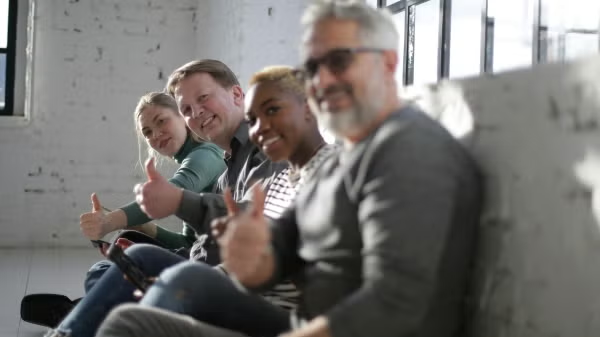
ASU research seeks solutions to challenges faced by middle-aged adults
Adults in midlife comprise a large percentage of the country’s population — 24 percent of Arizonans are between 45 and 65 years…

ASU research helps prevent substance abuse, mental health problems and more
Smoking rates among teenagers today are much lower than they were a generation ago, decreasing from 36% in the late 1990s to…
